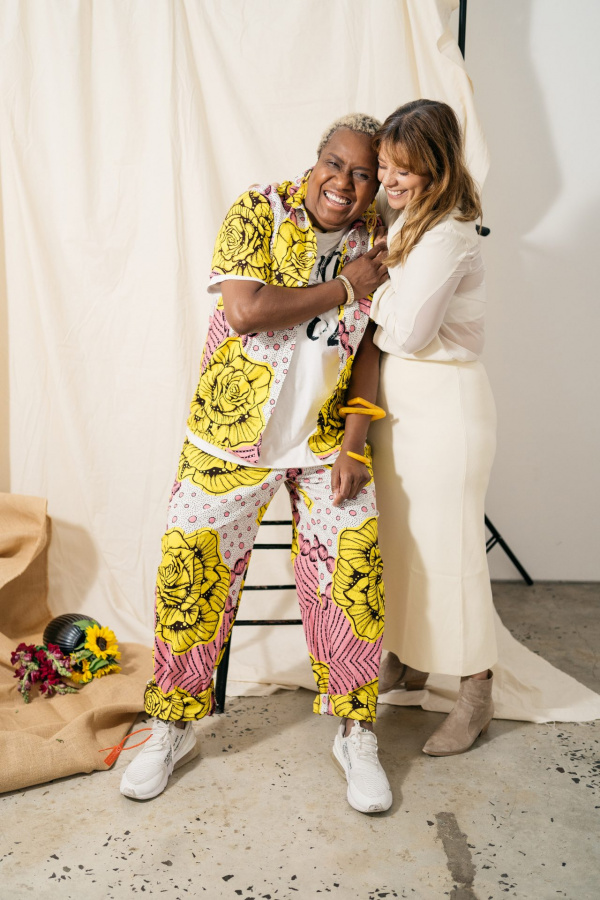
Madeleine Park believes in the power of meaningful fashion
- Fashion
Why meaningful fashion is key to a circular economy
With stylist, podcaster and sustainable fashion advocate Madeleine Park
Having spent 12 years in the fashion industry, I am well aware of the waste and destruction that goes on behind the scenes. Some outfits are one-hit wonders, lost in a mountain of deadstock and excess. I’m grateful that this message is spreading, and many of us are embracing a fresh approach to our wardrobes, but I think there is still so much to learn – particularly from those who came before us.
While I’m no technical expert when it comes to sustainable fashion, I am adamant about pushing forward the conversation. I believe creating a circular economy, influenced by the past, present and future, is the key.
When we talk about the circular economy, we refer to ‘closing the loop.’ In an ideal world, we no longer rely on finite resources and continue to use inputs over and over again – whether we start fresh and create something wholly new or frequently mend and repair.
I think that taking a more meaningful approach to fashion will propel this circular motion. When we get down to the nitty-gritty, it’s about understanding who we are and how we represent ourselves. The more we have an ability to connect our clothing to our sense of self, the more responsible we will be in our choices and, naturally, reduce waste or overconsumption.
Meaning can be found from so many different places and angles, shaped by our unique experiences. These may be derived from cultural background, influential figures, historical context, and more. As Yatu Widders Hunt mentioned in the recent article on First Nations fashion, her culture’s hallmarks of resilience, innovation and living harmoniously with the land are key learnings to drive the Australian fashion industry forward. How can we approach fashion with this vision and truly make an impact? There are so many stories and messages to share to enrich this country and the way we live.

inspiration is everywhere
Those who know me are familiar with my giant soft spot for vintage fashion; the idea of keeping beautiful pieces from previous eras in use excites me. I suppose it comes back to the influence of the prominent women in my life. My mother and grandmother both really loved style and took great pride in the way they looked. When they passed, I found myself packing up their belongings – all the doilies and tablecloths, every piece of clothing. I had to make the difficult decisions about what to keep; even though I wanted to hold onto it all, I physically couldn’t. So, I had to bring it back to the basics: What were the most important things? What represented these women most to me? And, most importantly, how do these things represent the sense of self that I gained from them?
Translating that to the wardrobe, I believe fashion builds identities and creates meaning. I’ve noticed the way these women have influenced my clothing choices, even subconsciously, like wearing a beautiful white Willow dress with my baby daughter and finding a photo of my mother in an uncannily similar look (with me in tow).
My love of the 1960s stems from my mother, particularly her obsession with the Beatles and Ringo Starr. I am naturally drawn to shapes and patterns with nostalgic references (hence my self-confessed vintage hound status). Balancing these aesthetics with the modern helps me embrace the elegance of my mother, with a touch of rough-around-the-edges.
Clothing is a tool for communication
My choices, whether highly considered or not, are about showing people that I am approachable and open, without any pretence.
Obviously, vintage fashion is a huge part of the circular economy; it is one of the easiest ways we can shop and consume in this way. Without creating anything new, we can play with new looks and upcycle (use them to create something new).
Personal style stories drive me (that’s why I launched my podcast). It’s amazing how much meaning a simple t-shirt or blazer can have – the way it makes the wearer feel or what it signifies for them. My hope is to inspire these conversations and push for actual change – not just on the runways or in the media, but in our everyday lives. The future of Australian fashion is a beautiful pooling of all these ideas, these rich stories and influences. We can build an industry that is unique, empowering and proudly circular.
Madeleine Park is a stylist, podcaster and vintage fashion hound living on Gadigal land. As part of Vivid Ideas Exchange, she is hosting an upcycled fashion show and panel discussion exploring First Nations fashion, the role of technology and nostalgia in the circular economy and, of course, how we create meaning. Head to Vivid Sydney to find out more and purchase tickets.
RELATED: The 12-year-old designers disrupting sustainable swim
